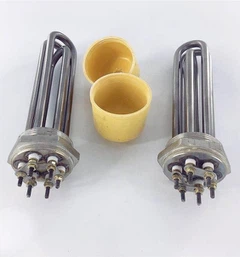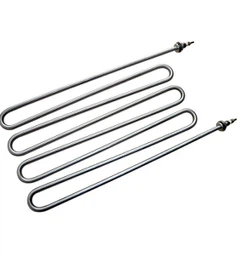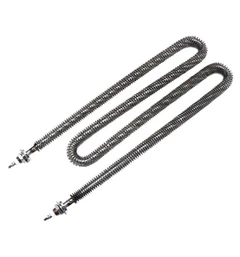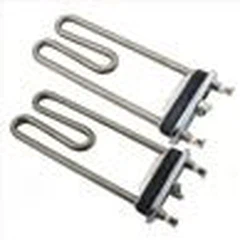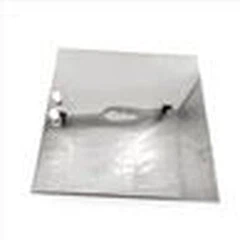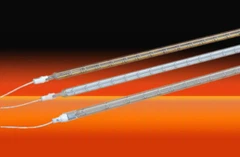You might think a heating element would need to have a really high resistance—after all, it's the resistance that allows the material to generate heat. But that's not actually the case. What generates heat is the current flowing through the element, not the amount of resistance it feels. Getting the maximum current flowing through a heating element is much more important than forcing that current through a large resistance. This might seem confusing and counter-intuitive, but it's quite easy to see why it is (and must be) true, both intuitively and mathematically.
Intuitively...
Suppose you made the resistance of your heating element as big as you possibly could—infinitely big, in fact. Then Ohm's law (voltage = current × resistance or V = IR) tells us the current flowing through your element would have to be infinitely small (if I = V/R, I approaches zero as R approaches infinity). You'd have a whopping great resistance, no current, and therefore no heat produced. Right, so what if we went to the opposite extreme and made the resistance infinitely tiny. Then we'd have a different problem. Although the current I might be huge, R would be virtually zero, so the current would zip through the element like an express train without even stopping, producing no heat at all.
What we need in a heating element is therefore a balance between the two extremes: enough resistance to produce heat, but not so it reduces the current too much. Nichrome is a great choice. The resistance of a nichrome wire is (roughly) 100 times higher than that of a wire the same size made from copper (an excellent conductor), but only a quarter as much as a similar-sized graphite rod (a fairly good conductor) and maybe only a million trillionth that of a really good insulator such as glass. The numbers speak for themselves: nichrome is an average conductor with only moderate resistance, and not remotely an insulator!
Mathematically...
We can reach exactly the same conclusion with math. The power produced or consumed by a flow of electricity is equal to the voltage times the current (watts = volts × amps or P = VI). We also know from Ohm's law that V = IR. Eliminate V from these equations and we find the power dissipated in our element is I2R. In other words, the heat is proportional to the resistance, but also proportional to the square of the current. So the current has much more effect on the heat produced than the resistance. Double the resistance and you double the power (great!), but double the current and you quadruple the power (fantastic!). So the current is what really matters.
It's easy to calculate that the resistance of the filament in a typical incandescent lamp is a few hundred ohms. I'll leave the calculation to you!

